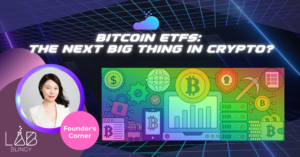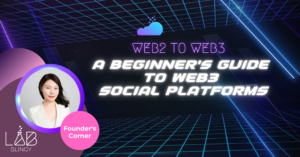The world of non-fungible tokens (NFTs) has captured the imagination of artists, collectors, and investors alike. In recent years, NFTs, unique digital assets representing ownership of items like artwork, music, and collectibles, have gained significant popularity. They provide a way to authenticate and prove ownership of digital creations in a decentralized manner. However, as the NFT market continues to expand, there is a growing need for improved standards and innovation to address certain challenges and ensure the long-term sustainability of this emerging ecosystem.
Understanding ERC-721 and ERC-1155 Standards
To comprehend the current landscape of NFTs, it’s essential to familiarize ourselves with the existing token standards. The two primary standards used for creating NFTs on the Ethereum blockchain are ERC-721 and ERC-1155.
ERC-721 is the original NFT standard that gained widespread adoption. It provides a way to tokenize unique assets, allowing individual ownership and transferability. Each ERC-721 token is distinct and cannot be divided into smaller units. This standard has been widely utilized in various projects, such as CryptoKitties and Decentraland, where users can own and trade unique digital assets like virtual land or digital collectible cats.
While ERC-721 introduced a groundbreaking concept, it also has certain limitations. Scalability is a notable concern, as each token requires a separate transaction, leading to congestion and high transaction fees during peak demand. Additionally, ERC-721 tokens lack built-in functionality for batch transfers or the ability to hold multiple assets within a single token.
To address some of these limitations, the ERC-1155 standard was introduced. ERC-1155 is a multi-token standard that allows for the creation of fungible and non-fungible assets within a single contract. It offers improved scalability and efficiency, as multiple tokens can be managed and transferred in a single transaction. This standard has been adopted by projects like Enjin, which enables the creation and trading of NFTs for in-game items and virtual collectibles.
While ERC-1155 provides advantages in terms of efficiency and flexibility, it may not be suitable for all use cases. Some projects require the uniqueness and indivisibility provided by ERC-721, while others benefit from the multi-token capabilities of ERC-1155.
Overall, ERC-721 and ERC-1155 are the two primary standards that have shaped the NFT ecosystem thus far. Each offers unique features and caters to different needs within the digital collectibles and virtual assets space.
ERC-6551 – The Next Generation NFT Standard
However, as the NFT market continues to grow, there is a demand for further innovation and improved standards to address scalability, interoperability, and the diverse requirements of creators and collectors.
The NFT ecosystem constantly evolves, and new standards are emerging to address the limitations and push the boundaries of what NFTs can offer. One such standard that has gained attention is ERC-6551, also known as the Next Generation NFT Standard.
ERC-6551 aims to revolutionize the NFT space by introducing several key features and improvements. The primary goal of this standard is to enhance functionality, interoperability, and user experience within the NFT ecosystem.
- Customizable metadata: One of the key features of ERC-6551 is the introduction of customizable metadata. Unlike previous standards where metadata was predefined, ERC-6551 allows creators and collectors to define custom metadata fields, providing greater flexibility in describing and categorizing NFTs. This opens up new possibilities for artists and creators to add additional context, information, or interactive elements to their NFTs.
- Enhancing the programmability of NFTs: It introduces new smart contract functionalities that enable dynamic interactions with NFTs. For example, ERC-6551 allows NFTs to have upgradeable features, where certain attributes or properties of an NFT can be modified or improved over time. This programmability opens up opportunities for evolving virtual worlds, gamification, and dynamic content within the NFT space.
The potential impact of ERC-6551 on the market and adoption of NFTs is significant. By addressing the limitations of previous standards and introducing new features, ERC-6551 creates a more robust and versatile NFT ecosystem. It empowers creators to push the boundaries of what NFTs can offer, attracts new participants to the space, and encourages innovative use cases and applications.
Benefits and Advancements with ERC-6551
ERC-6551 brings several benefits and advancements to the NFT ecosystem, including enhanced functionality and interoperability. One of the notable advancements is improved cross-chain compatibility. ERC-6551 allows for seamless interoperability between different blockchain networks, enabling NFTs to be created, traded, and accessed across multiple platforms and ecosystems. This opens up new markets and expands the reach and potential value of NFTs.
Moreover, ERC-6551 addresses the limitations of previous standards, such as scalability and transaction costs. By leveraging advancements in blockchain technology, ERC-6551 aims to provide a more scalable and cost-effective solution for NFTs. It explores innovative techniques like layer-two solutions, sidechains, or off-chain storage to mitigate congestion and reduce transaction fees, making NFTs more accessible to a wider audience.
Real-World Use Cases Leveraging ERC-6551
ERC-6551, the Next Generation NFT Standard, has sparked the development of various real-world use cases and projects that are harnessing its capabilities to create innovative and engaging experiences within the NFT ecosystem. Let’s explore some notable examples:
- Virtual Real Estate: With ERC-6551, virtual real estate projects have gained momentum. These projects leverage the programmability and customizability of NFTs to create virtual worlds where users can buy, sell, and develop virtual properties. Owners can customize their virtual spaces, monetize them through in-world advertising, and even host events. This new wave of virtual real estate offers a unique investment opportunity and immersive social experiences.
- Dynamic Artwork: ERC-6551 has enabled artists to create dynamic and interactive NFT artwork. Artists can now incorporate programmable elements into their creations, allowing them to evolve or respond to external factors. For example, an NFT artwork can change its appearance based on real-time data or user interactions. This dynamic nature adds a new layer of engagement and interactivity to the art world, blurring the lines between traditional and digital art.
- Gaming and Collectibles: The gaming industry has embraced ERC-6551 to enhance the gaming experience and create valuable in-game assets. Game developers can now issue NFTs representing unique characters, weapons, or virtual items. These NFTs can have upgradeable attributes, enabling players to enhance or trade their assets in secondary markets. Collectibles such as trading cards, virtual pets, or rare in-game items have also found a new dimension with the flexibility offered by ERC-6551.
- Decentralized Finance (DeFi): ERC-6551 has opened doors for integrating NFTs with decentralized finance protocols. NFTs can now be used as collateral in lending platforms or as liquidity providers in automated market-making systems. This convergence of NFTs and DeFi creates new financial opportunities and liquidity for NFT holders, allowing them to leverage their NFT assets in decentralized financial ecosystems.
- Social Tokens and Community Governance: ERC-6551 facilitates the creation of social tokens, which are community-backed digital assets representing ownership or access to specific communities or organizations. These tokens enable community members to actively participate in decision-making processes and benefit from the community’s success. ERC-6551 provides the necessary infrastructure to implement community-driven governance models and incentivize active participation within these ecosystems.
These real-world use cases and projects are just a glimpse of the potential that ERC-6551 brings to the NFT space. As more developers and creators explore the capabilities of this next-generation standard, we can expect to see even more innovative and diverse applications that leverage the programmability, interoperability, and enhanced functionality offered by ERC-6551.
The Future Beyond ERC-6551
As we delve into the future of NFTs, it becomes evident that ERC-6551 is just the beginning of a remarkable journey. While ERC-6551 introduces significant advancements and improvements to the NFT ecosystem, there are still exciting prospects for further developments and innovations in NFT standards. Let’s explore some potential areas of expansion and the role of emerging technologies in shaping the future of NFTs.
- Enhanced Interoperability: NFT standards will likely continue to evolve to facilitate seamless interoperability across different blockchain networks. The ability to transfer and interact with NFTs across various platforms and ecosystems will unlock new possibilities for creators, collectors, and users, fostering a more interconnected and vibrant NFT landscape.
- Fractional Ownership and Secondary Markets: We can expect advancements in fractional ownership models, allowing multiple individuals to collectively own and trade shares of NFTs. Fractional ownership opens up investment opportunities, lowers barriers to entry, and increases liquidity. Additionally, improvements in secondary markets will provide more robust infrastructure for buying, selling, and trading NFTs, fueling the growth of the NFT market.
- Integration with Web3 Technologies: Web3 technologies, such as decentralized identity and decentralized storage solutions, will play a crucial role in the future of NFTs. Decentralized identity systems will enhance the security and authenticity of NFT ownership, while decentralized storage will ensure reliable and censorship-resistant hosting of NFT metadata and assets. These technologies will contribute to a more decentralized and user-centric NFT ecosystem.
- Scalability Solutions: Blockchain scalability has been a challenge for NFTs due to the high demand and congestion on certain networks. However, emerging scalability solutions such as layer 2 solutions, sidechains, and sharding offer promising avenues for addressing these limitations. These solutions will enable NFTs to scale to accommodate large-scale adoption while maintaining efficiency and cost-effectiveness.
ERC-6551 represents a significant leap forward in NFT standards, but the future of NFTs holds even more promise. As the NFT landscape evolves, it is crucial for enthusiasts, creators, collectors, and investors to stay informed and actively explore the possibilities that emerge. The world of NFTs is dynamic and ever-changing, with new projects, use cases, and advancements being introduced regularly. By staying engaged and informed, individuals can participate in and contribute to the exciting journey of NFT innovation.
I encourage you to continue exploring the evolving NFT landscape, keeping an eye on emerging standards, technologies, and opportunities. The future of NFTs is bright, and your involvement can shape its trajectory. So, embrace the potential of ERC-6551 and the exciting prospects for the future of NFTs, and embark on your own NFT journey with enthusiasm and curiosity.
Follow my Twitter @JoyyuanWeb3 to learn about Blockchain, Crypto, Metaverse, and Web3 trends!








